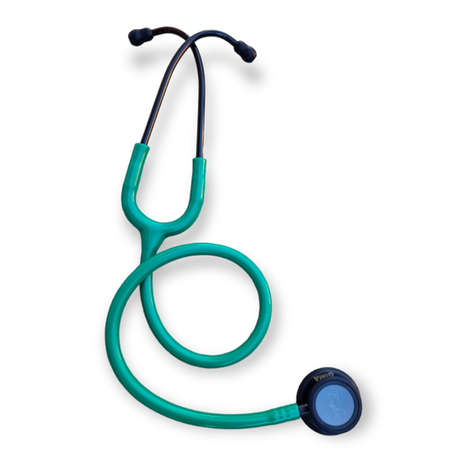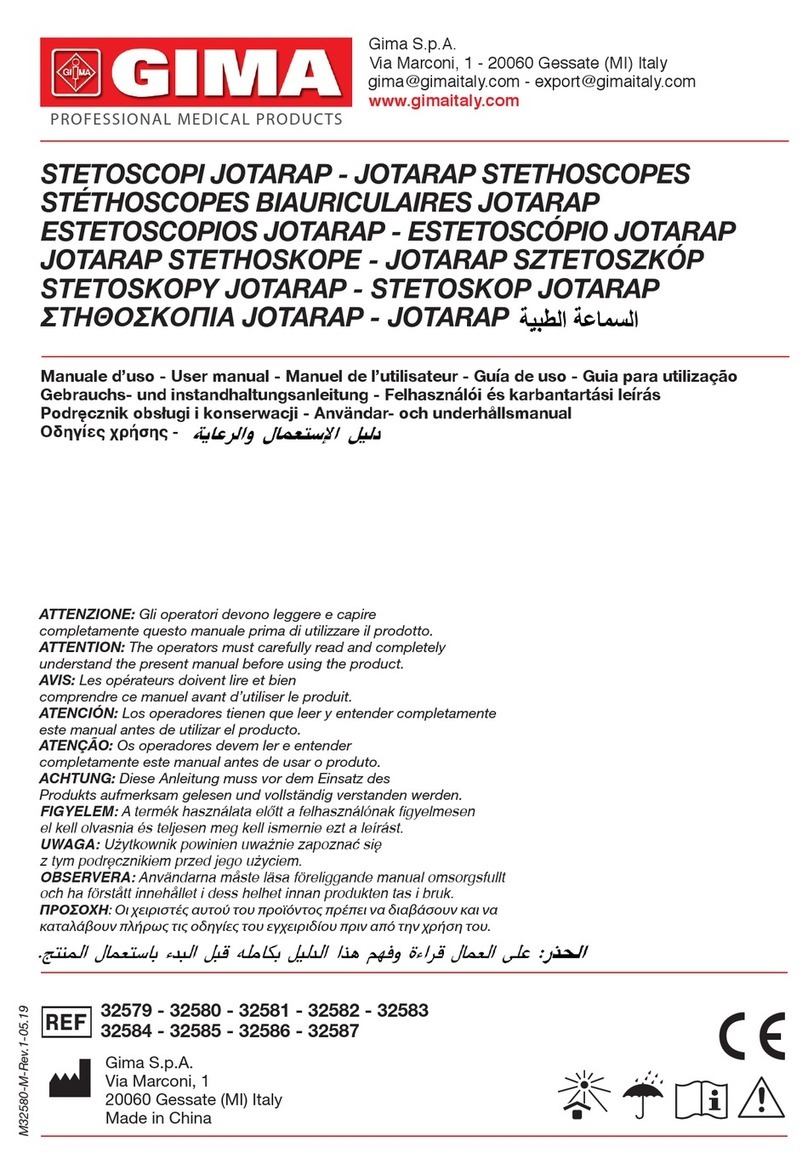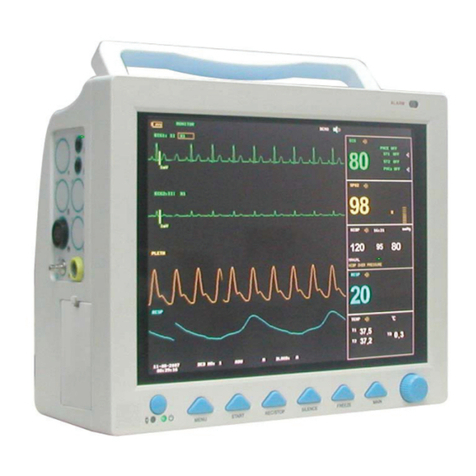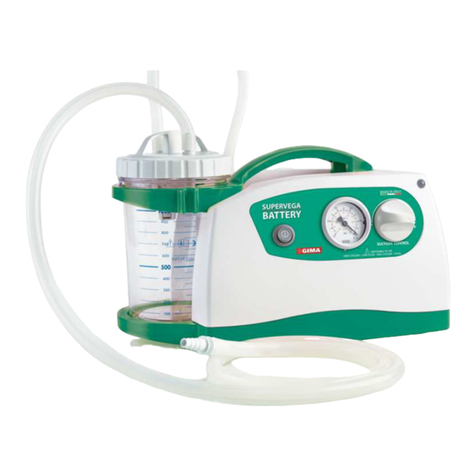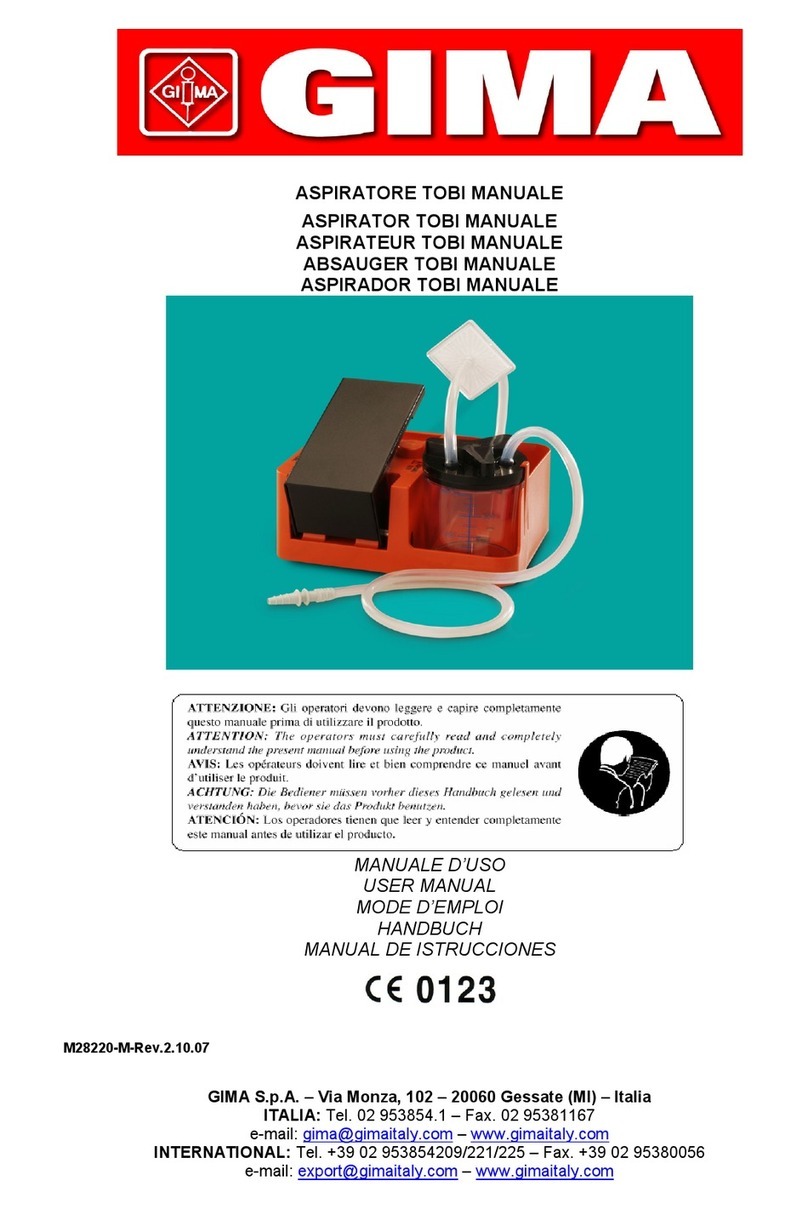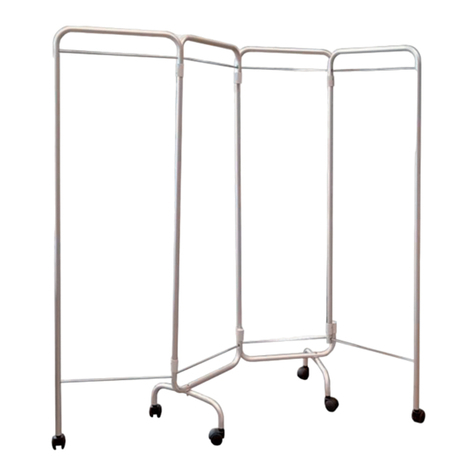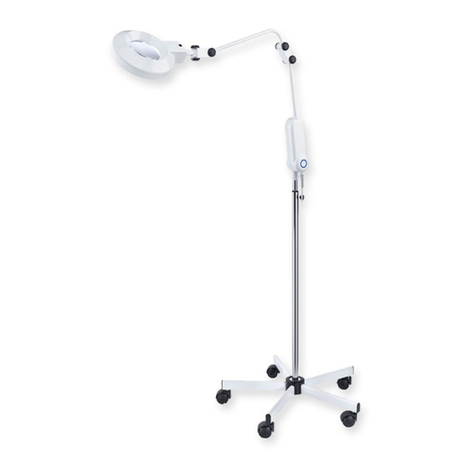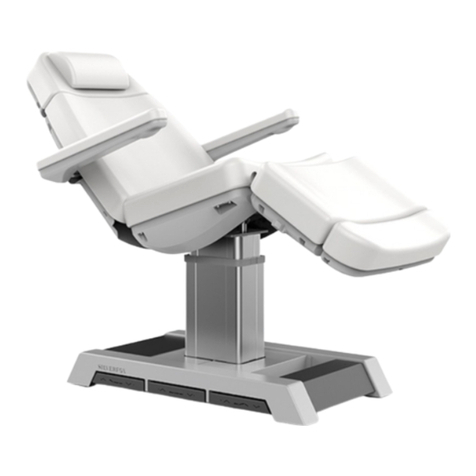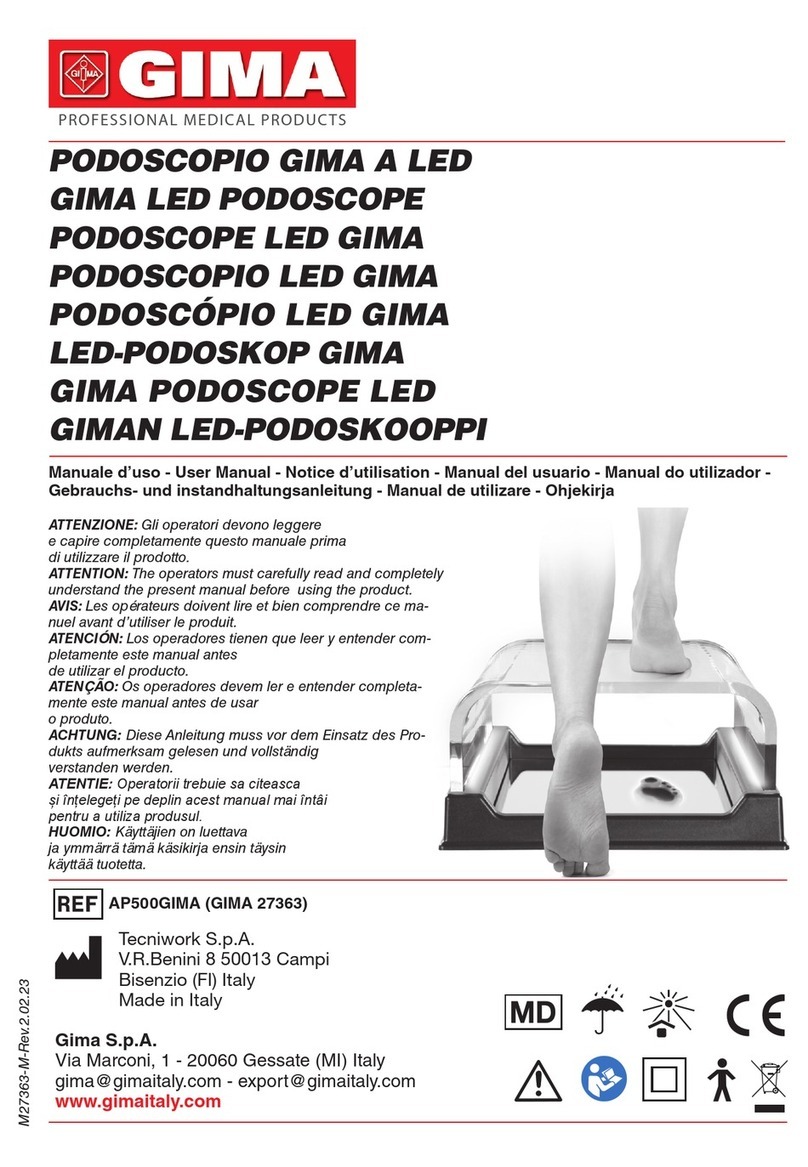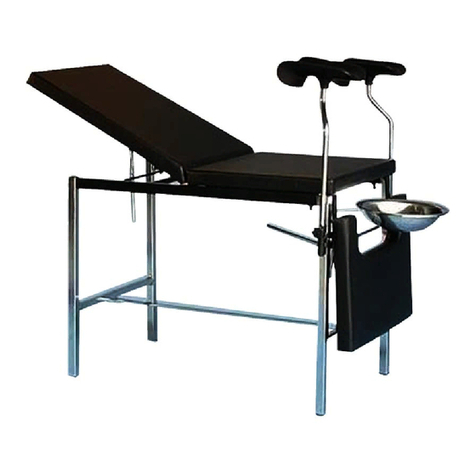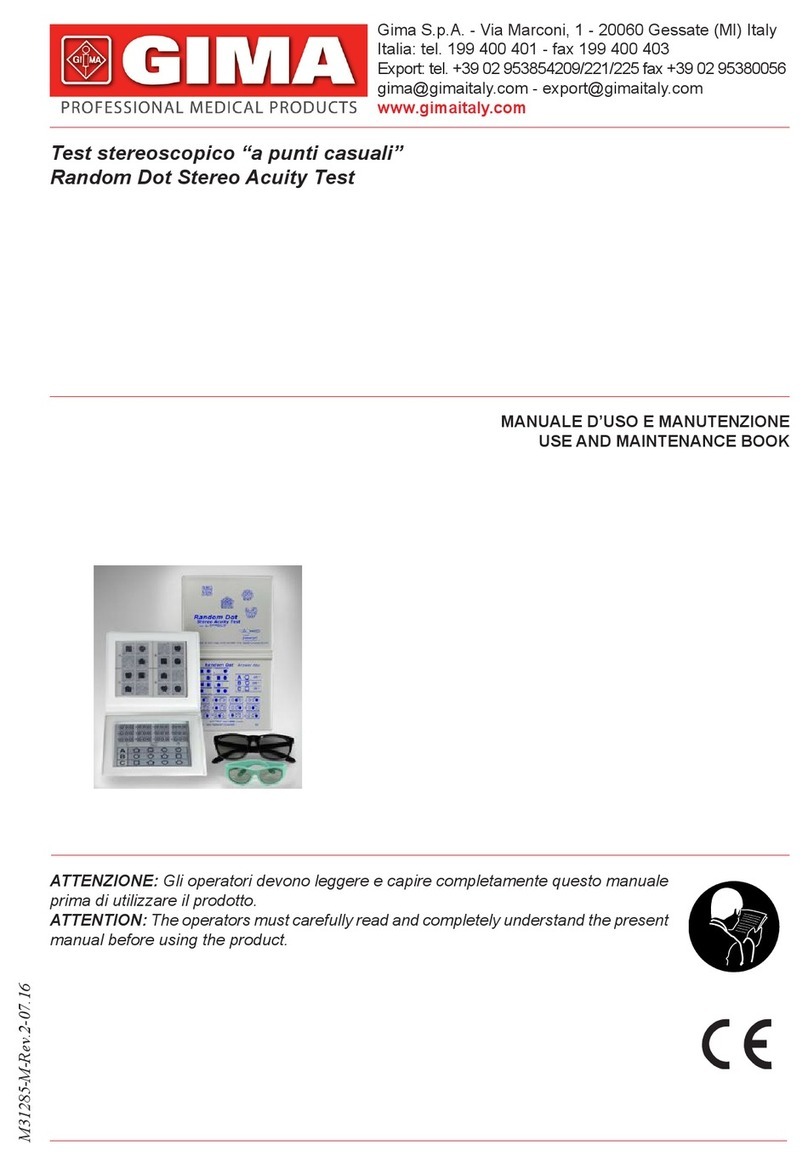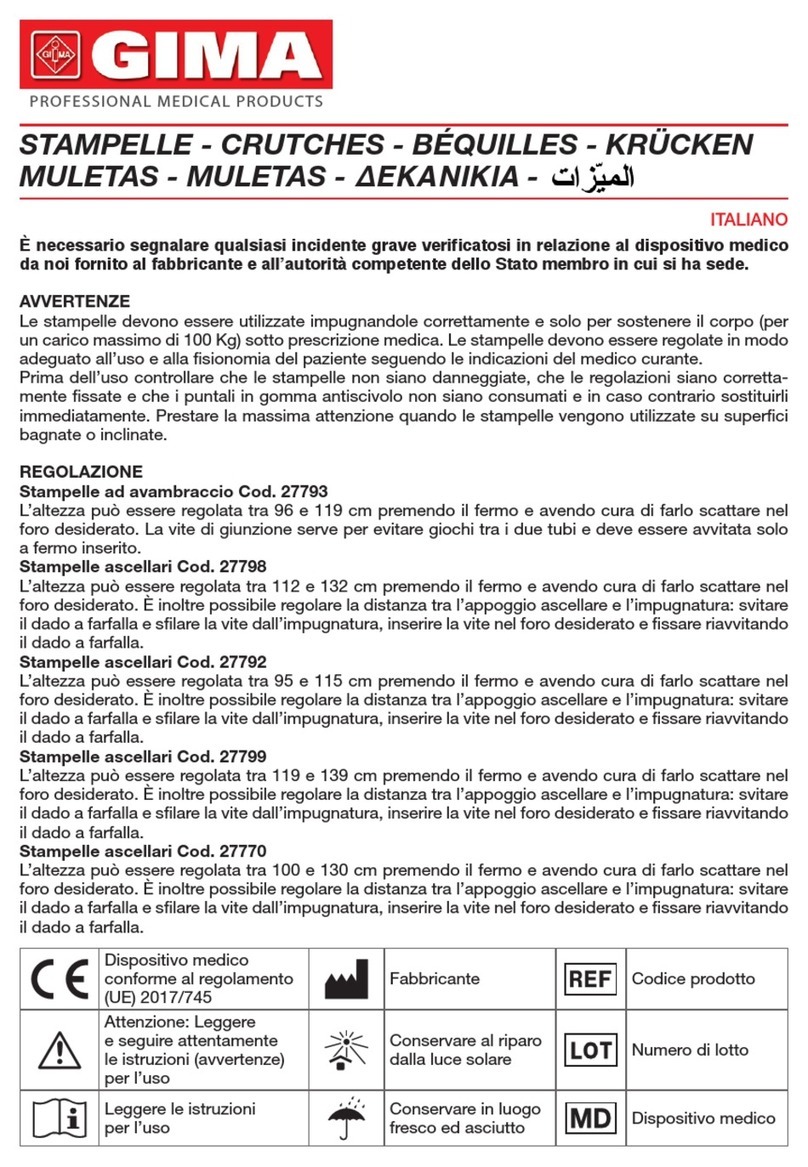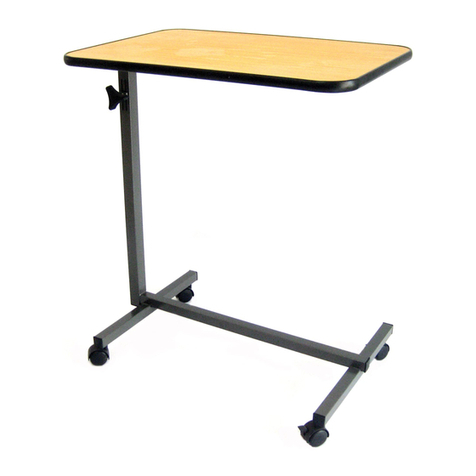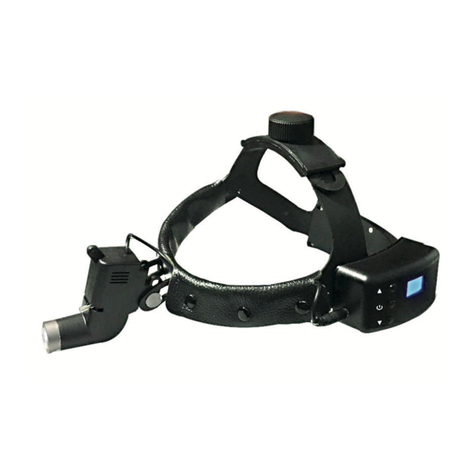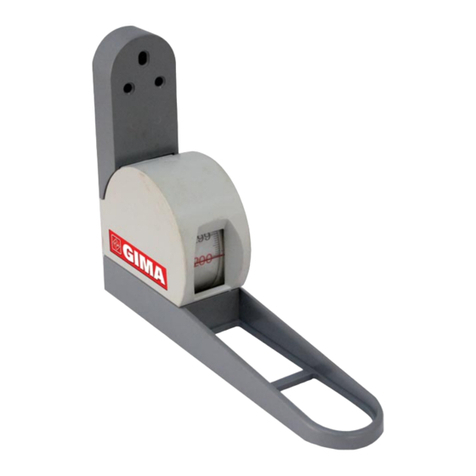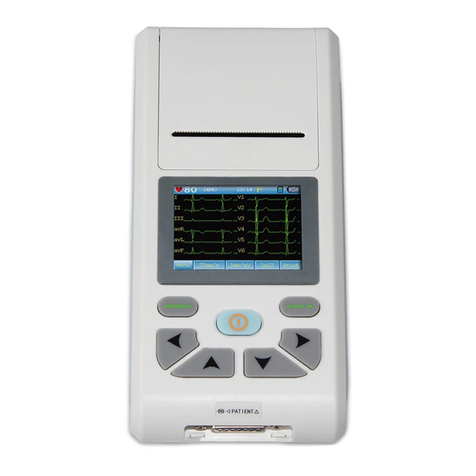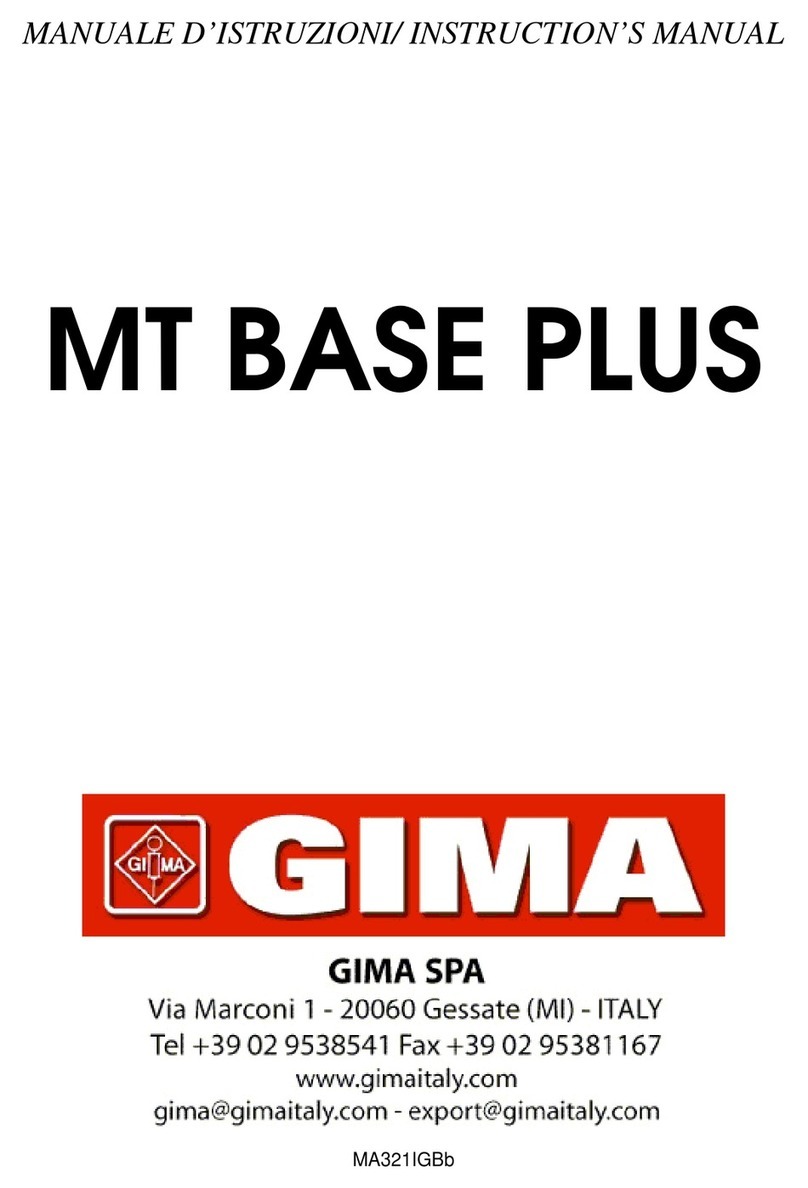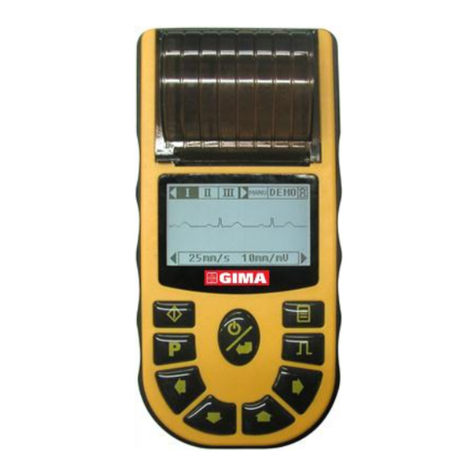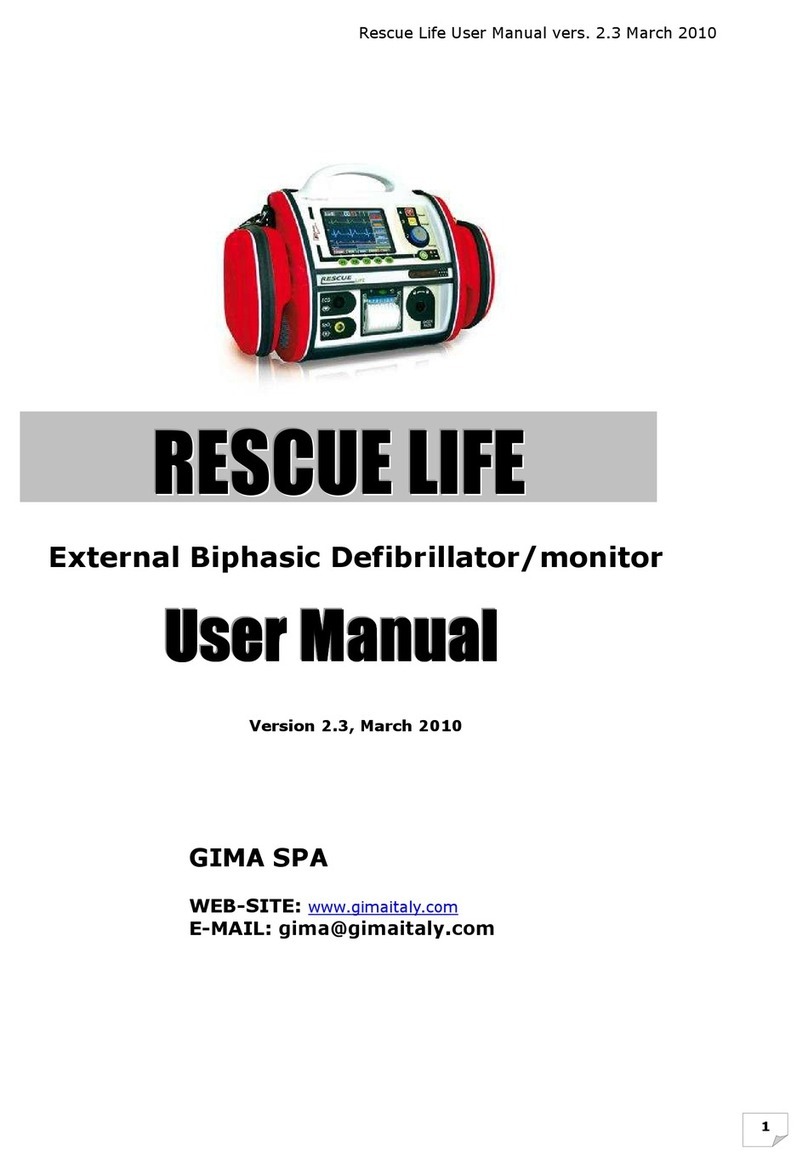
3ITALIANO
• Il cavo di alimentazione deve essere posato in modo tale che durante il funzionamento del lettino non venga trascinato via, calpestato o dan-
neggiato.
• Prima di ogni spostamento togliete assolutamente la spina di alimentazione dalla presa di corrente e sistemate il cavo di alimentazione in modo
tale che non possa cadere o toccare il pavimento.
• Assicuratevi che il cavo non possa essere danneggiato durante l’azionamento del motore.
• Posizionare e azionare in maniera sicura la pedaliera garantendo la protezione del paziente contro possibili movimenti motorizzati indesiderati
• Evitate assolutamente l’utilizzo di connessioni a prolunghe di cavi o spese multiple sotto al letto. Prolunghe di cavi e/o prese multiple non do-
vrebbero essere assolutamente utilizzate.
• Vericare ogni 3 mesi l’usura del cavo del comando a pedale e quello collegato alla rete. In caso di usura e/o slacciamento si deve subito
sostituire il cavo danneggiato.
• Vericare ogni 6 mesi che durante il funzionamento non vengano emessi suoni o vibrazioni inusuali che potrebbero segnalare anomalie agli
attuatori e/o meccanismi. Alla ne delle operazioni sopra indicate completare l’ispezione superando la prova di lavoro di un ciclo di sollevamento
con il carico massimo di sicurezza.
•
Controllare periodicamente, o dopo un uso particolarmente intenso, il serraggio di viti e bulloni, perni;assenza di lesioni e deformazioni strutturali.
• Vericare periodicamente lo stato del rivestimento
• Il letto va abbassato quando non è possibile sorvegliare il paziente
• Non piegare, annodare e strizzare il cavo di alimentazione
• Non schiacciare i cavi di alimentazione di altri dispositivi col telaio del letto
• Non sedersi sul poggiatesta del lettino.
• È vietato utilizzare accessori e cavi diversi da quelli specicati o forniti in dotazione al lettino.
• Consultare il capitolo relativo ai dati tecnici per vericare che la tensione sia conforme alle speciche tecniche del lettino.
• Prima di usare il lettino, consultare il capitolo relativo ai dati tecnici per vericare che l'ambiente sia conforme alle condizioni ambientali.
• Evitare l'esposizione diretta alla luce solare, ai raggi UV, a sporco eccessivo, umidità, vibrazioni e urti.
• Non spostare il lettino con sopra una persona o un peso. Spostare il lettino soltanto su una supercie pianeggiante.
• Il "carico di lavoro sicuro" del lettino corrisponde a 135 kg. Ovvero il peso totale a cui viene sottoposto il lettino (il peso del paziente più altri
carichi, ad esempio la manipolazione del terapista)non deve superare i 170 kg.
MANUTENZIONE E PULIZIA
• Utilizzare solo ricambi originali.
• Controllare periodicamente tutti i punti di ssaggio.
• Per conservarlo al meglio, si consiglia di evitare l’esposizione prolungata ai raggi solari; il contatto con ambienti salini; il deposito in ambienti
molto umidi.
• Lavare le superci in acciaio inox con acqua saponata ed usare disinfettanti appositi.
• Risciacquare con un panno bagnato ed asciugare con cura.
• Non versare sulle superci detergenti a base di cloro o ammoniaca, sostanze grasse ed oleose.
• Non usare per la pulizia utensili contenenti ferro. Se necessaria la disinfezione usare solo prodotti idonei non corrosivi.
Indicazioni di pulizia per il tessuto
• Pulire con tessuto inumidito ed insaponato e sciacquare bene con acqua pulita. Non usare solventi,candeggine e detergenti chimici o spray per
lucidare. Attenzione: In generale i colori chiari delle nte pelli non possono essere messi a contatto di vestiti con coloranti non ssati (es. jeans
e derivati) onde evitare macchie o aloni che non si possono pulire
COMPATIBILITÀ ELETTROMAGNETICA
LIVELLI DI CONFORMITÀ SECONDO LA NORMA EN 60601-1-2:2015
- Immunità ESD 15kV in aria 8kV a contatto (EN 61000-4-2)
- Immunità burst 2kV/100kHz (EN 61000-4-4) alimentazione/1kV segnali
- Immunità surge (EN 61000-4-5): 1kV comune/2kV differenziale
- Campo magnetico (EN 61000-4-8): 30A/m
- Immunità dips: 0% 0,5 cicli; 0% 1 ciclo; 70% 25 cicli (50Hz) e 30 cicli (60Hz);
Interruzioni: 250 cicli (50Hz); 300 cicli (60Hz)
- Immunità alle correnti rf nel range 150kHz-80MHz (EN 61000-4-6) 3Vmodulazione 80% 1kHz
6V modulazione 80% 1kHz per i seguenti range di frequenza:
6,765 MHz ÷ 6,795 MHz
13,553 MHz ÷13,567 MHz
26,957 MHz ÷ 27,283 MHz
40,66 MHz ÷ 40,70 MHz
- Emissioni CISPR 11 classe A
- Armoniche EN 61000-3-2 classe A
- Flicker pst, dt, dc
IMMUNITÀ AI CAMPI RF (EN 61000-4-3):
FIELD (V/M) FREQUENCY MODULATION
380MHz÷2700MHz 1kHz AM 80%
27 380MHz÷390MHz 18Hz PM 50%
28 430MHz÷470MHz 18Hz PM 50%
9704MHz÷787MHz 217Hz PM 50%
28 800MHz÷960MHz 18Hz PM 50%
28 1700MHz÷1990MHz 217Hz PM 50%
28 2400MHz÷2570MHz 217Hz PM 50%
95100MHz÷5800MHz 217Hz PM 50%
